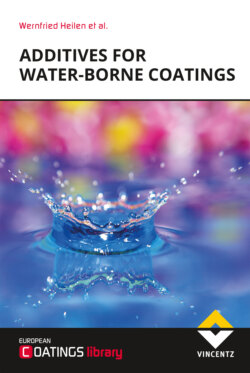Читать книгу Additives for Waterborne Coatings - et al. - Страница 38
На сайте Литреса книга снята с продажи.
2.5.2Colour strength
ОглавлениеFor colour strength determination a mill base sample is let down in an appropriate coating formulation and applied. Evaluation is carried out by optical examination or by a spectrophotometer and compared with that of a standard grind using the same amount of the mill base sample. The amount of the mill base sample under evaluation is then adjusted. When both samples give the same optical appearance, the relative colour strength of the new sample in % of the standard can be calculated. Relative colour strength determination is very complex but provides meaningful comparative data. This test method is used mainly by pigment manufacturers.
Determination of absolute values is based on Kubelka-Munck theory. This involves the relationship between reflection and transmission of light. Summation of the reflection over the entire spectrum gives a value for the colour strength. In practice, this method suffers from a systematic error since it is based on the assumption of an infinite film thickness and a constant degree of reflection. It is therefore not suitable for pigment development and pigment manufacturers prefer the method of relative colour strength determination.
Kubelka-Munck equation:
CS = K/S = (1–R)²/2R
where
| CS = | colour strength |
| K = | absorption coefficient |
| S = | scattering coefficient |
| R = | reflectance at infinite film thickness (hence no change in degree of reflection) |
